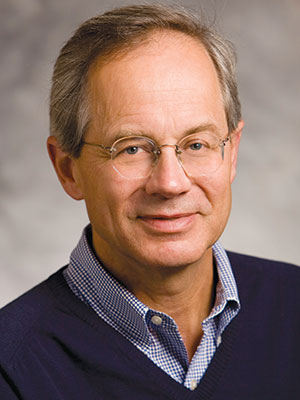
T follicular helper (Tfh) cells are familiar targets in treating autoimmune diseases that feature pathologic interactions between T cells and B cells, playing a key role in stimulating B cell responses in secondary lymphoid organs such as the spleen. More recent research shows that Tfh cells are not the only players in T cell/B cell interactions leading to autoimmune disease. There are also populations of extrafollicular T helper cells that can affect T cell/B cell interactions.
“It is pretty clear that extrafollicular T helper cells play a role in lupus, among other autoimmune disease,” said Joseph Craft, MD, Paul B. Beeson Professor of Medicine and Professor of Immunobiology and Program Director of Investigative Medicine at the Yale School of Medicine. “If you want to understand the biology of lupus, you need to understand how extrafollicular T helper cells work in that disease.”
Dr. Craft will discuss what is known about the roles extrafollicular T helper cells play during the State-of-the-Art symposium Extrafollicular T Helper Cells: Drivers of Autoimmune Disease? from 1:00 – 2:00 pm Tuesday in Room B403, Building B in the Georgia World Congress Center. Researchers have recently described several novel pathogenic pathways in which extrafollicular T helper cells contribute to disease. Some of these pathways seem likely to emerge as therapeutic targets.
Launching an effective adaptive immune response is based in large part on the interaction of antigen-specific T cells and B cells, noted Andreas Hutloff, PhD, Group Leader in Chronic Immune Reactions at the German Rheumatism Research Centre, Germany. Tfh cells are the T cell subset that help B cells differentiate into either antibody-producing or memory species.
The classical interaction between T cells and B cells takes place in specific compartments of secondary lymphoid organs that employ a highly structured environment to control production of antibodies and long-term memory B cells with very high affinity for specific antigens. These safeguards also minimize the production of B cells with low affinity that react to multiple antigens with low affinity, including self antigens.
In contrast, extrafollicular T helper cells are frequently found in inflamed tissues, such as synovial tissue from patients with rheumatoid arthritis and in other tissues affected by autoimmune disease. Like Tfh cells, extrafollicular T helper cells play a key role in T cell/B cell interactions to produce activated B cells. But B cells produced by extrafollicular T helper cells can be less antigen specific and appear to be more active in autoimmune reactions and autoimmune disease.
T cell/B cell interaction is a very early event in the inflammatory cascade leading to the production of autoreactive antibodies.
“That makes these Tfh-like cells a very attractive therapeutic target because if you can block them, you could cure autoimmune before it really begins,” Dr. Hutloff said.
Despite many similarities with classical Tfh cells, extrafollicular T helper cells depend on different signals. This could also help explain why some patients do not respond well to traditional therapies such as CD28 costimulation blockade that focus on classical T cell/B cell interactions.

Dr. Hutloff’s group identified a population of extrafollicular T helper cells in a common mouse model of airway inflammation. In the mouse model, lung tissue-resident Tfh-like cells drive the differentiation of antigen-specific B cells, contributing to the local generation of pathogenic antibodies and contributing to local tissue damage.
“We now have almost identical findings in the lung of sarcoidosis patients,” Dr. Hutloff said. “And I think that we might see something similar in RA patients because it is known that autoreactive B cells are present not only in the synovial membranes, but also in their lungs.”
Extrafollicular T helper cells may be the most pathogenic subset of T cells because they select autoreactive B cells in an uncontrolled environment. Unlike the classical Tfh cells that are constrained by location, extrafollicular T helper cells seem to have few limits as they drive local production of pathogenic antibodies directly in already-inflamed tissues.
“There are no agents on the market that target these Tfh-like cell populations, Dr. Hutloff said. “But if these findings in extrafollicular T helper cells can be confirmed, the strategies will come.”


